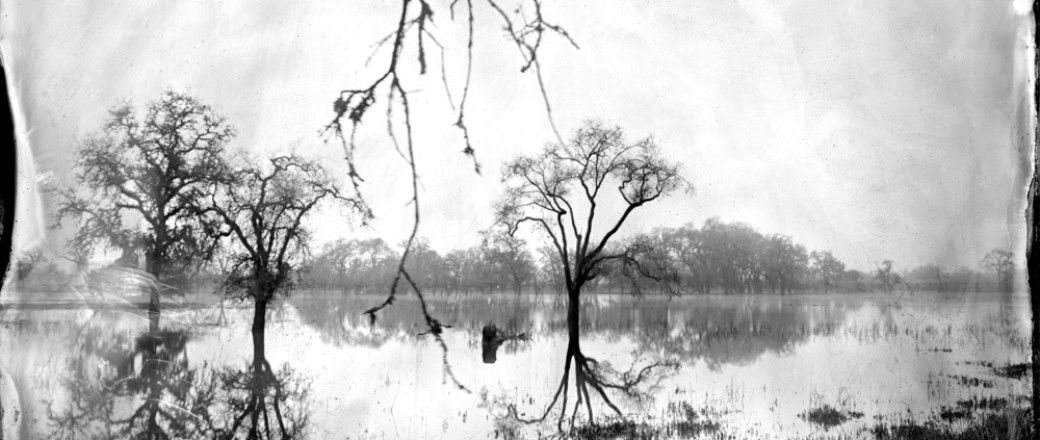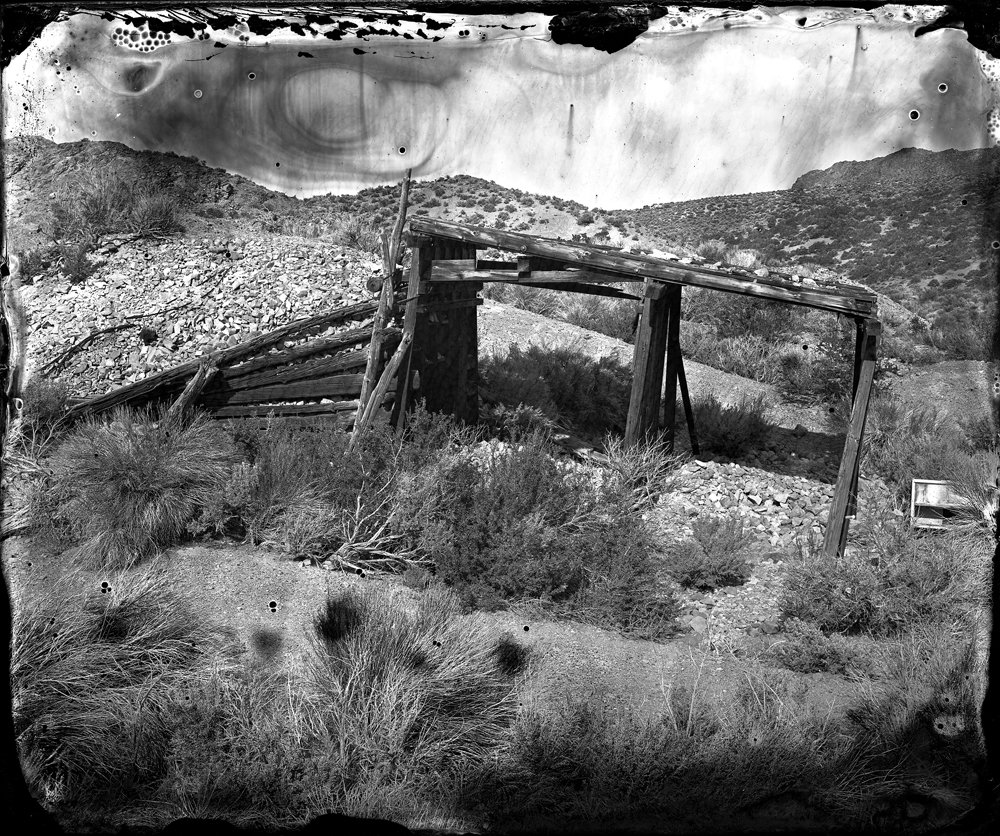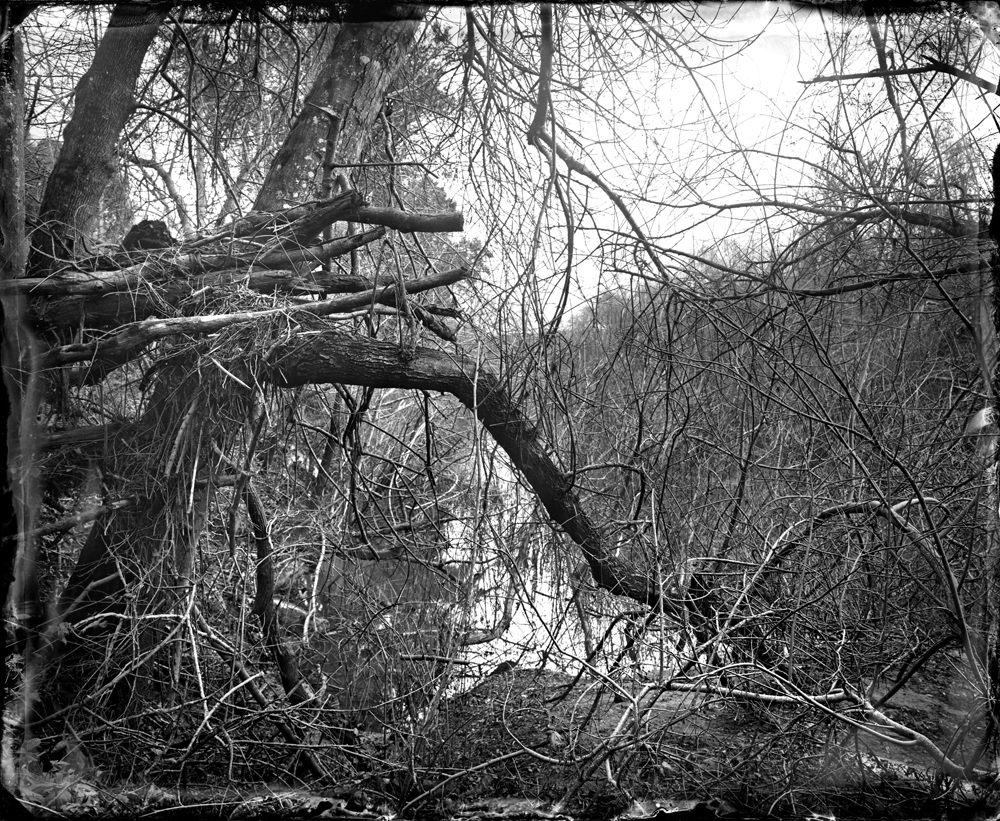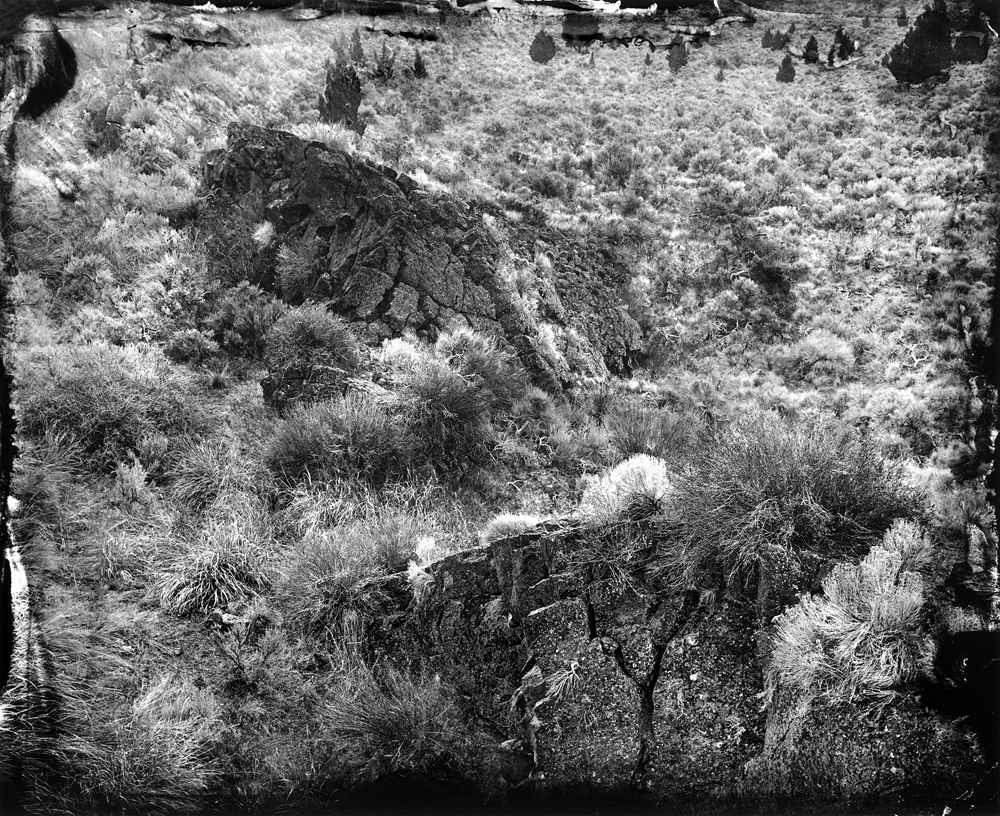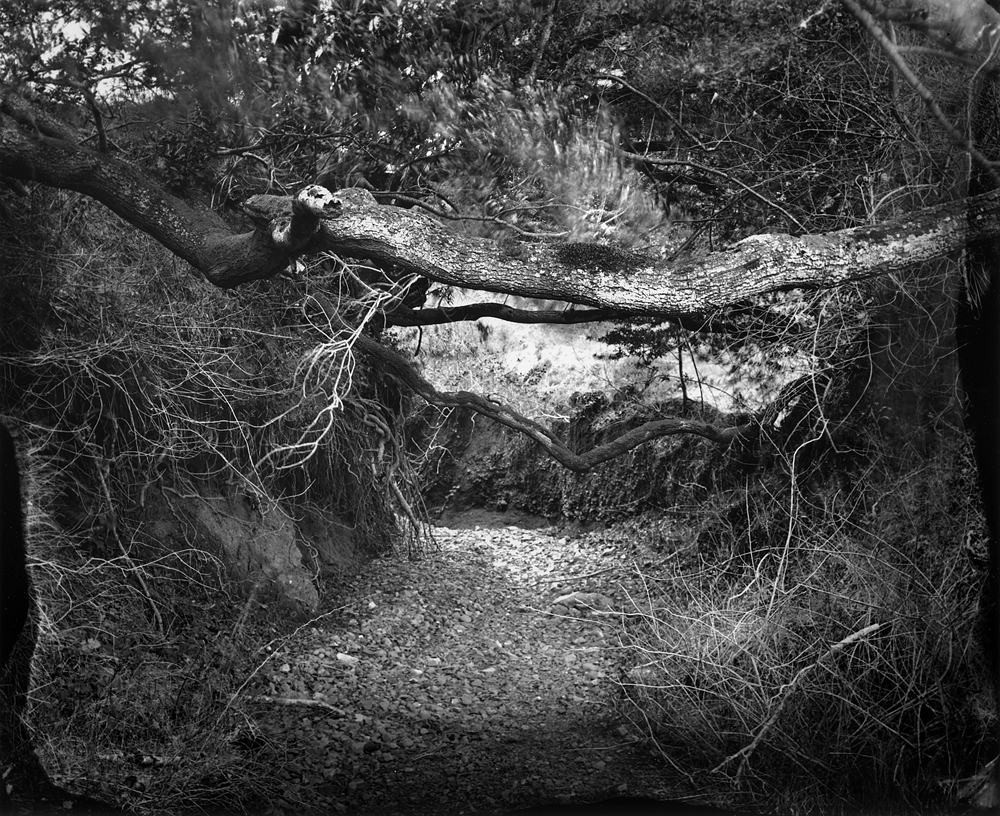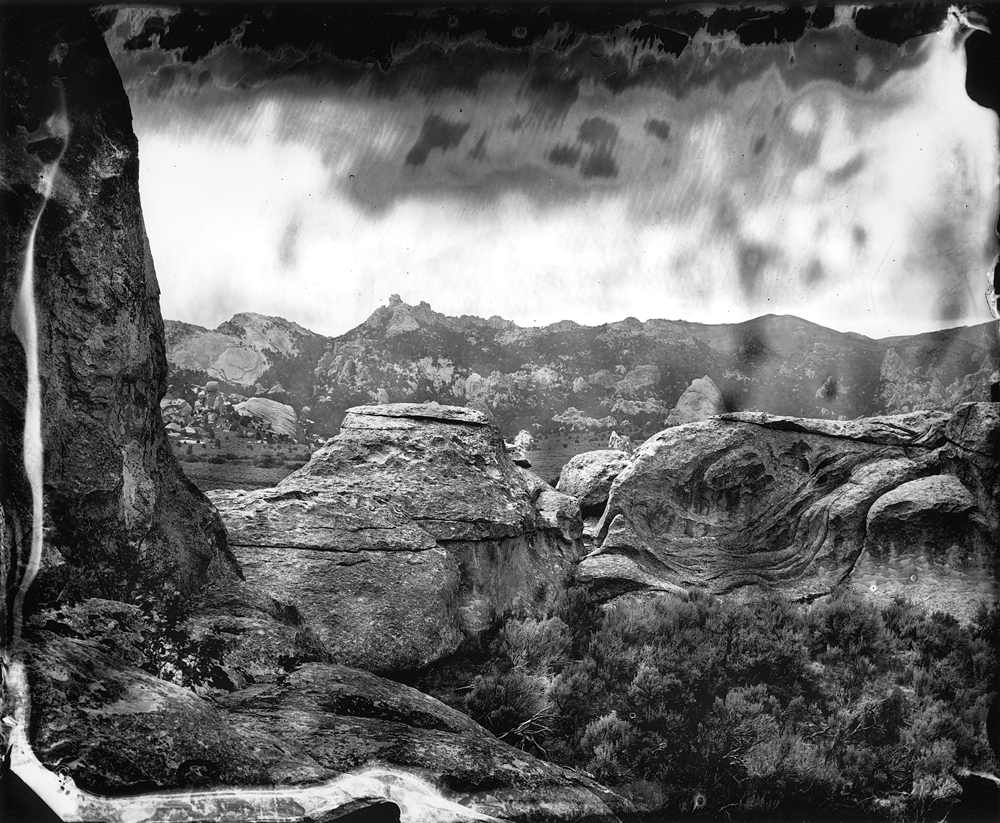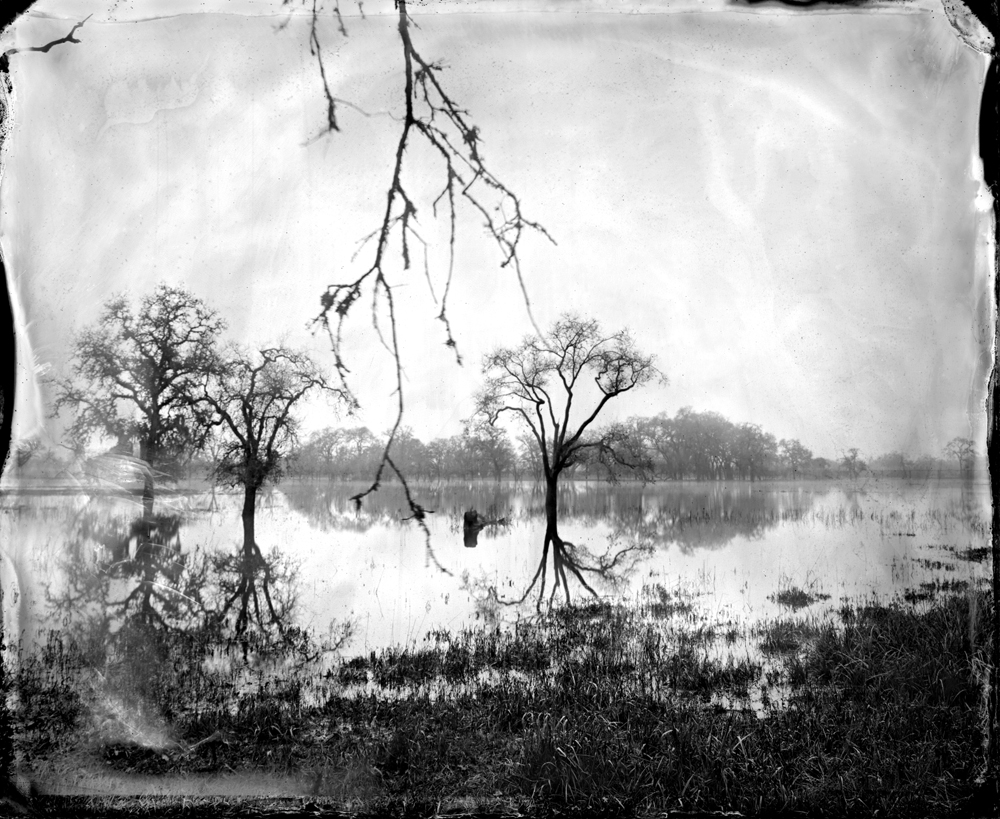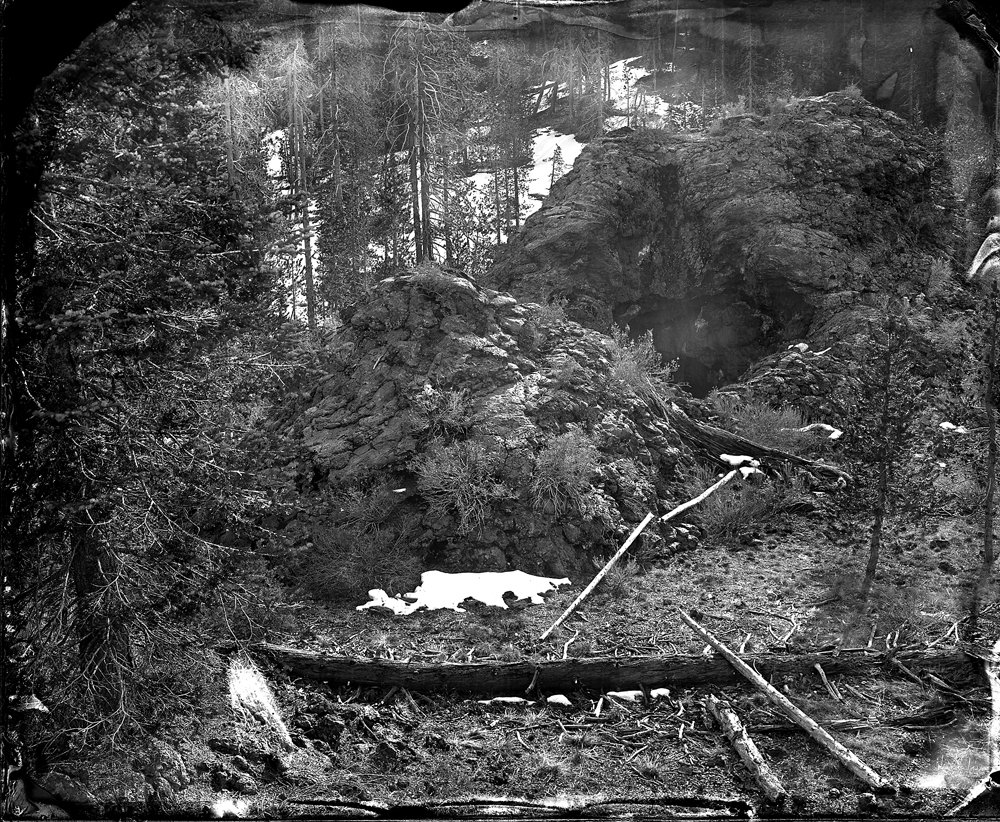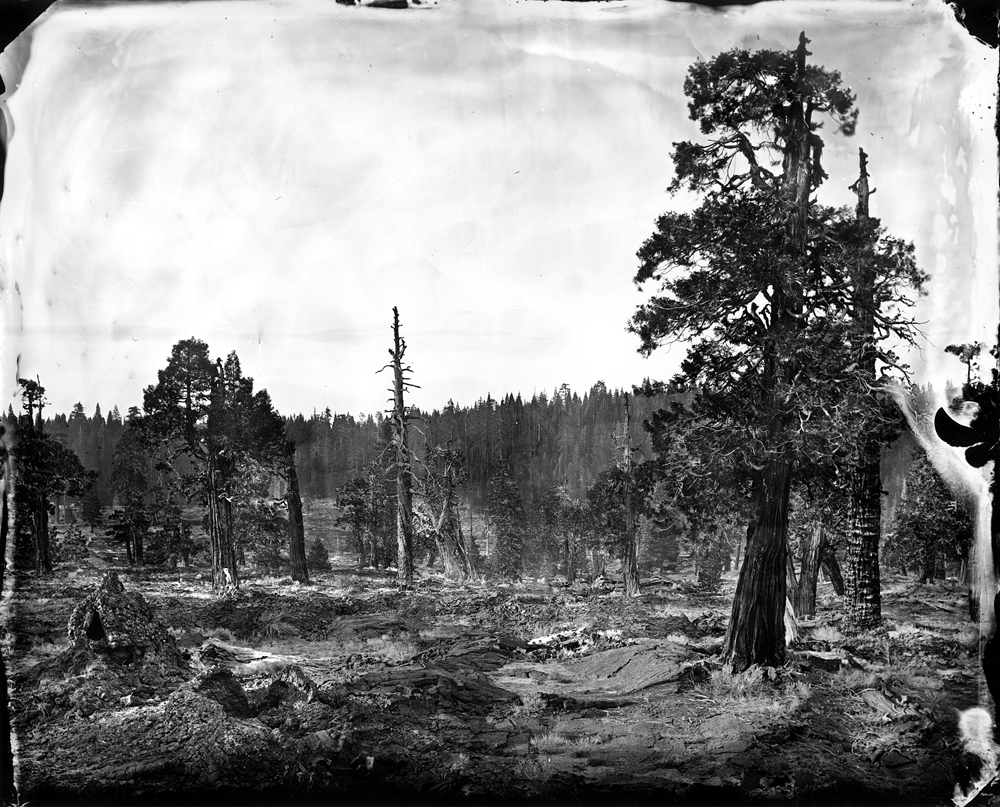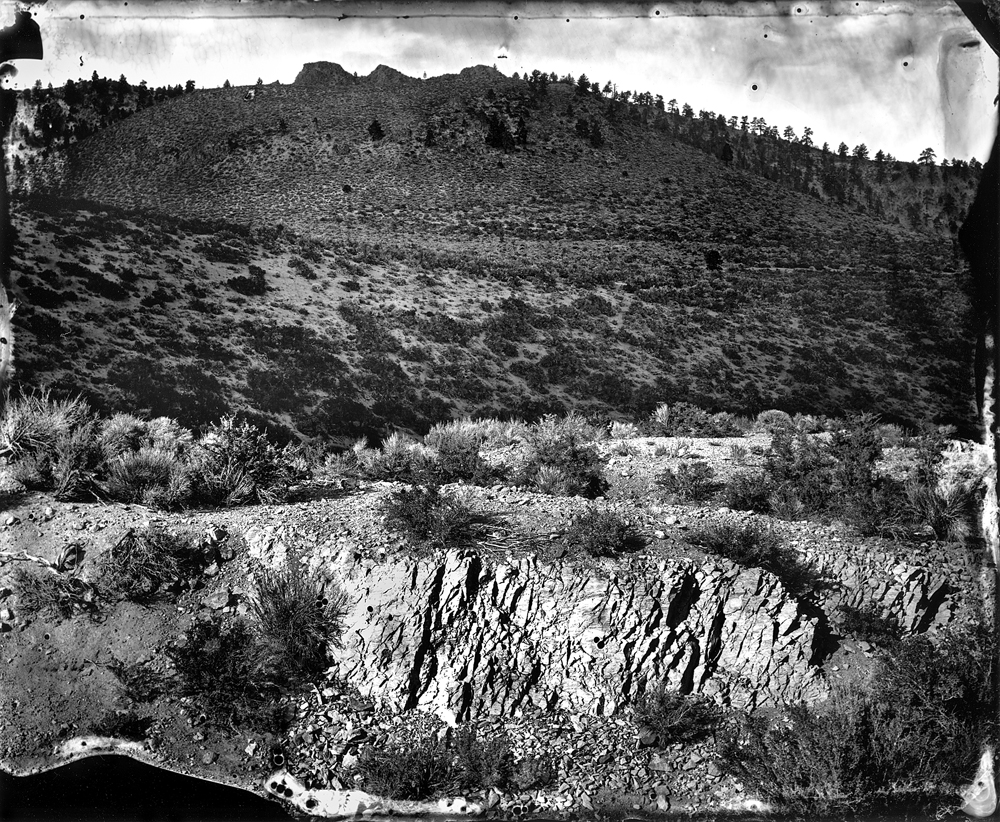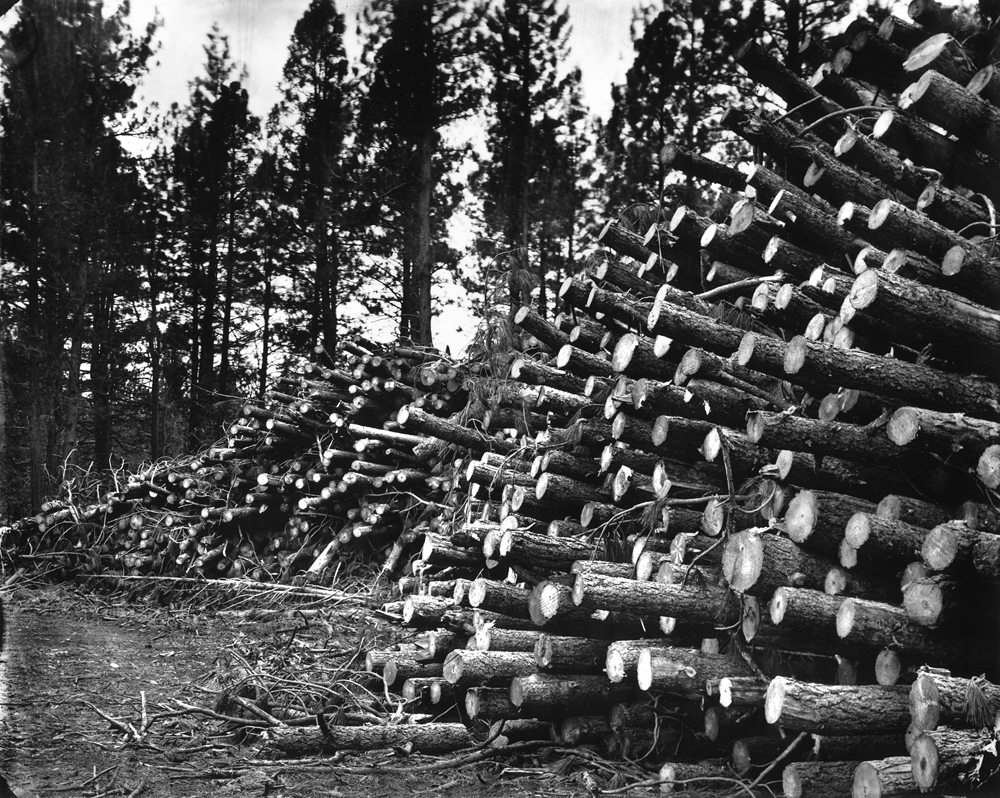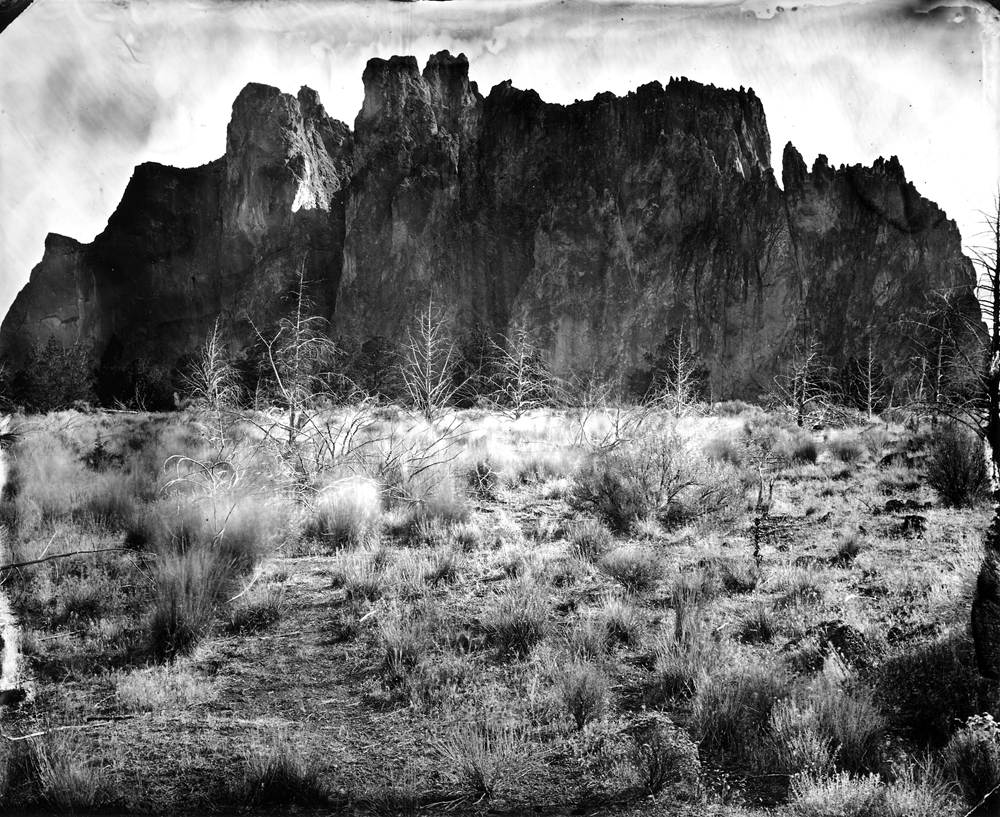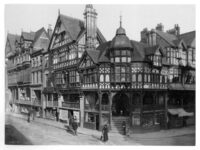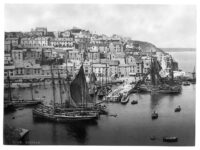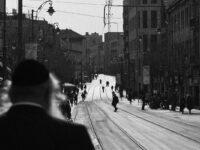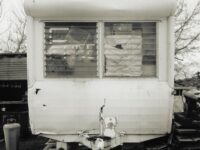Ben Nixon creates landscapes of extraordinary beauty through the unwieldy nineteenth-century wet-plate collodion process, a hands-on photographic technique that offers the artist tight control of materials and yet invites serendipitous visual irregularities influenced by conditions in the field. Nixon avoids photographing recognizable landscapes, transforming non-iconic terrain into mysterious, intriguing worlds.
Nixon prefers older technologies so that he can slow down and respond to the subject in front of him. While shooting in the field, Nixon’s car becomes the darkroom, because in the collodion process, glass-plate negatives have to be prepared, exposed, and developed on-site while the materials are moist. If the plates dry, they are no longer light sensitive. Although Nixon is a master technician, he sets aside academic ideas of what constitutes a perfect print, preferring to show his hand as an artist.
Nixon grew up in Spartanburg, South Carolina. While he was in high school, he received a book about Minor White, and it changed his life. He realized that photography was more than a documentary medium; it could be an integral part of one’s life as an avenue of self-expression. This inspired him to attend Sierra Nevada College in the Lake Tahoe region and then to study photography at Rockport College (now Maine Media College) on the east coast.
In 2002, Nixon began what he considers his real education when he moved to California to assist Jack Welpott, with whom he worked for five and a half years and from whom he learned to appreciate metaphysical and surrealist aspects of photography. Afterward, Nixon assisted Arno Rafael Minkkinen on West Coast projects and printed for Arthur Tress, William Heick, and Art Rogers, and he continues to collaborate with many artists.
Last year was an exciting one for Nixon. 21st Editions published To the Wheatlight of June: The Visions of Ben Nixon and Steven Brown, a beautifully cased portfolio of ten platinum prints and nine poems. Nixon also received the Pirkle Jones Foundation Grant.
Nixonʼs work is shown at many museums and galleries, including Oakland Museum of California, The Center for Fine Art Photography, Duncan Miller Gallery, Gallery 291, and SFO Museum. His prints are part of the permanent collections of the Santa Barbara Museum of Art, Greenville County Museum of Art, Datz Museum of Art, Seoul, and Bolinas Museum, as well as many private collections throughout the United States. His work is currently traveling in South Korea in the exhibit Tracing Light, also featuring works by Linda Connor, Klea McKenna, and Chris McCaw. The exhibit has moved from the Datz Museum of Art and will open this fall at the Eugean Gallery, in Seoul.
How and when did you become interested in photography?
I had early aspirations to become a National Geographic photographer, but that all changed in high school, once I discovered the work by Minor White. From that point, I wanted to follow in his footsteps and become a fine art photographer. I went to school at Rockport College, now the Maine Media Workshops, where I was trained in the craft of fine print making and how to create cohesive bodies of work. After Maine, I began a five and a half year master class with photographer and teacher, Jack Welpott.
Is there any artist/photographer who inspired your art?
Frederick Sommer is one artist that has and continues to inspire me. Early on, I was experimenting in the darkroom, trying to emulate some of Fredʼs working methods. He was always breaking new ground and never satisfied with recreating the same image over and over. I donʼt try and make work like Sommer, but his confidence and personal belief in his work are inspiring.
Why do you work in black and white rather than colour?
I prefer to transform the world from color to monochrome. The fine art photograph to me, should not just be a record of something we all already know, it should present a mysterious new world that makes us think differently about what we already know. Color photographs are much more digestible to the mainstream viewer and Iʼve never wanted to be mainstream.
How much preparation do you put into taking a photograph/series of photographs?
My current body of work is produced using the 19th century wet plate process. I make 3.5” x 4.25” glass plate negatives on location in the landscape. I have a portable darkroom in the back of my car. This darkroom can also be transported on a garden cart, which allows me to work further into the forest. I have to shoot and process the negative on-site before the plate dries. Once the plate dries, it is no longer light sensitive. This process of making the negative is very slow and very deliberate.
Where is your photography going? What projects would you like to accomplish?
I am now represented by several galleries around the country and my work has been exhibited and collected by several museums. I moved from California to Asheville, NC in the summer of 2013. Currently, Iʼm working on a book of Southern Landscapes, but I could also see a two book set that incorporates the work produced in the West. I have always worked with exhibitions in mind, but I think it is very important for artists to have there work published.
Website: bennixonphotography.com

